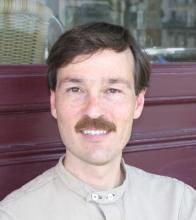
This is an interdisciplinary resource site that explores the burgeoning area of experimental scholarship happening at the confluence of the neurosciences - humanities.
Listen to audio interviews with neuroscientists. Those listed here have had their work taken up in the humanities and participate in cross-disciplinary projects. Hear how they respond to questions about the value and popularity of the neurosciences. Hear how they think about the humanities and cross-disciplinary collaborations.
Meet the interviewees, see the interview questions, or just listen to the interviews.
Interviews conducted between 2013-2014. Last updated spring 2015
Back to top
The Interviewees
Jack Gallant, University of California, Berkeley
Marco Iacoboni, University of California, Los Angeles
Gregory Hickok, University of California, Irvine
Larry Cahill, University of California, Irvine
Anna Kuhlen, Berlin School of Mind and Brain, Berlin
Daniel Margulies, Max Planck Institute for Human Cognitive and Brain Sciences, Leipzig


